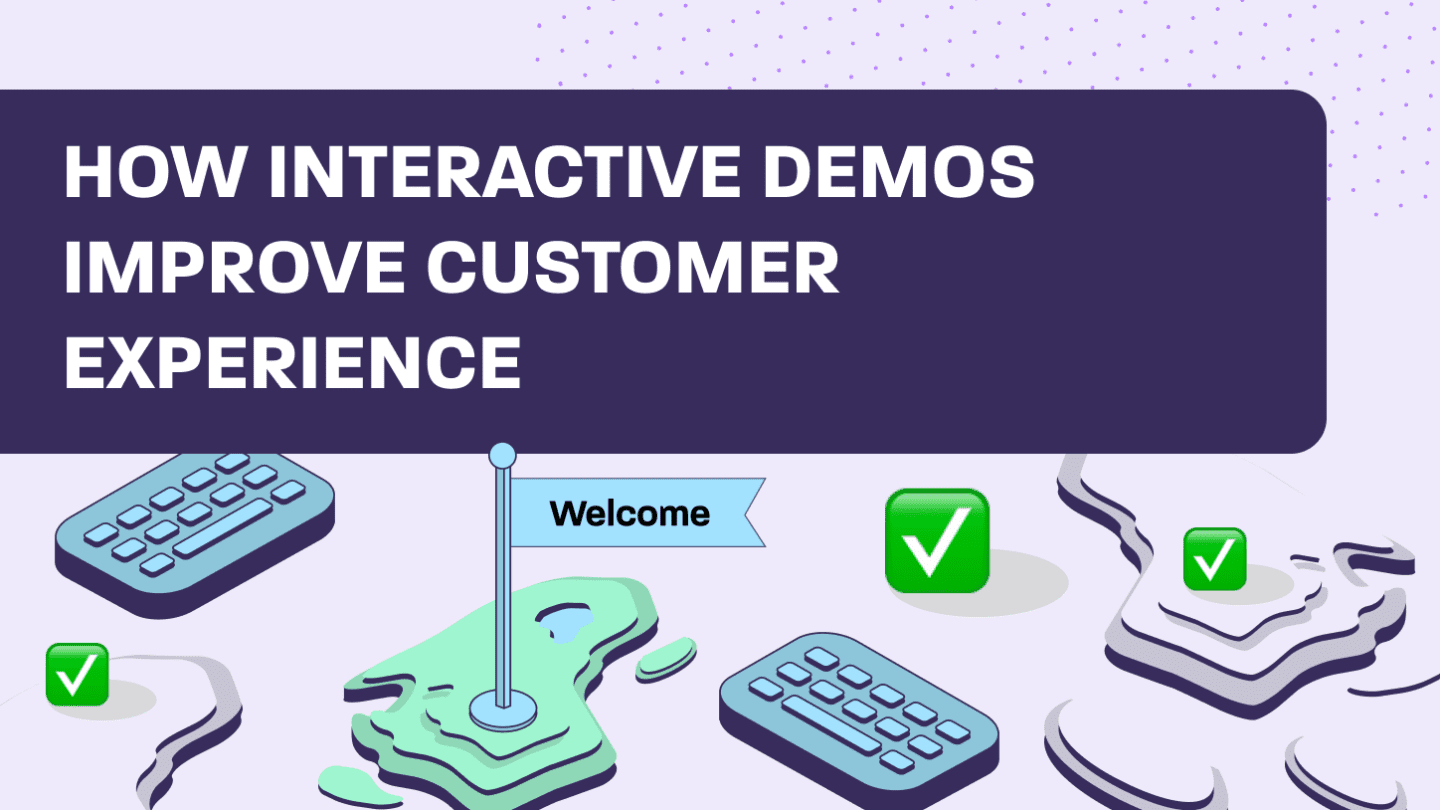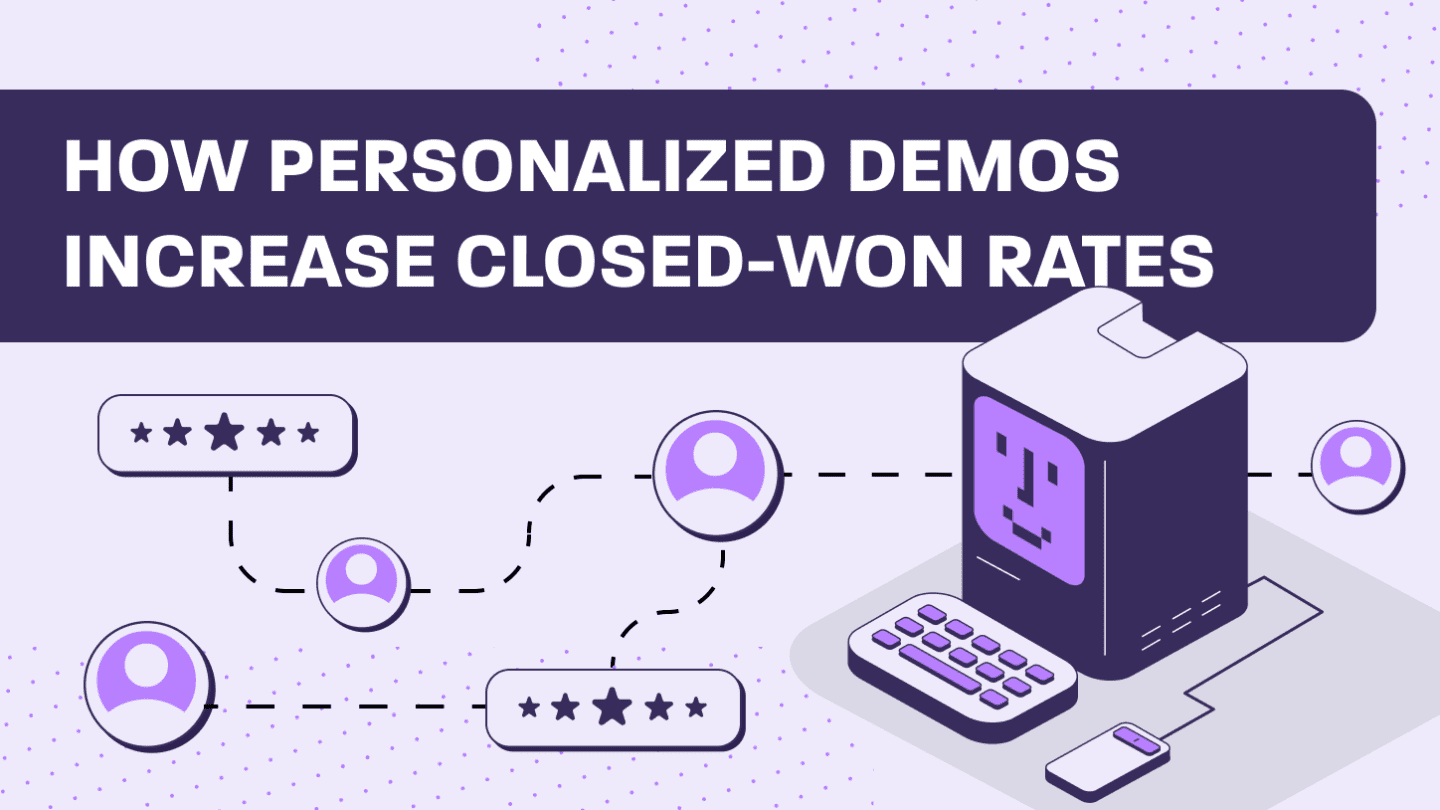Times are changing in the sales world. Everyday new technologies are being leveraged to transform old school sales methods and techniques.
But there are some things that never change — the need to show your product’s value. Because let’s face it, no one’s gonna buy your product if they don’t understand what it’ll do for them.
That’s where product demos will come in handy. But what’s the best way to show your product in order to increase sales?
Well, it just so happens that this is exactly what we are going to tackle in this article.
What are product demos?
When we talk about a product demo we’re referring to a presentation of your product that showcases its unique value proposition to a potential buyer.
During the demo, prospects expect to see how your product works and why they absolutely must have it in their lives.
To be successful, a demo needs to show how your product solves your buyer’s pain points and position your product as the best possible solution on the market.
What are interactive product demos?
So, how are interactive product demos different from your regular old product demo?
An interactive product demo is a demo that gives viewers the power to interact directly with synthetic data in digital products and freely click through it.
Some interactive demos include guides so that reps can direct prospects to specific features that will provide them unique value.
With interactive demos, GTM teams can let prospects try their product at any stage of the sales process, whether it’s embedding demos on websites, delivering personalized live demos during demo calls, sending interactive demo leave-behinds for champions to share with their team, or including interactive tutorials for training and onboarding.
Plus, according to Gartner, offering a product experience ASAP in the buying journey can help you educate your buyers and gain valuable insights about buyer intent.
Here are some of the advantages and disadvantages of this type of product demo:
Advantages
- More realistic product experience—Give prospects a demo experience that is closer to what it’s actually like to use your product.
- Improve engagement—Because prospects can freely click through interactive demos, you’ll offer a more engaging experience that allows them to focus on what interests them and skip the parts that aren’t relevant.
- Used throughout the sales process—Given that you can embed an interactive demo on your website or include them in your emails, you give prospects the ability to see your product whenever they want to.
- Help you analyze and optimize your sales process—Interactive demos enable you to monitor key metrics that you can use to improve your sales process.
- Boost high-quality leads—Because you can track how prospects interacted with your demos, it will help you better understand which parts of your demo were the most interesting for them. This can help you qualify your leads and understand what to focus on during your next call with them.
- Generate high-intent leads—When you show prospects the product from the get-go, they already have a basic understanding of how it works before they meet with your team. This means that the leads that do meet with your team will have higher intent.
- Save time and resources—You don’t need to rely on R&D because anyone can simply and quickly spin up killer demos.
- Easy to scale—Not only is it simple to create a demo template, but you can easily duplicate and personalize it for any vertical or use case you want to showcase.
Disadvantages
- Need an interactive demo platform—You will need to make an initial investment in an interactive demo platform before you can start offering interactive product demos.
How to get the most out of your interactive product demos
There’s something else you need to consider though.
You need to make sure you use a platform that will help you get the most out of your interactive product demos. This means finding a solution that lets you add value at each and every stage of the sales funnel.
However, most software on the market only addresses specific parts of the funnel.
For example, there are demo software that work for top-of-funnel use cases, meaning they offer good solutions for guided demos. But if your needs go behind marketing product tours and other top-of-funnel applications, these solutions won’t get the job done.
There are also solutions out there that let you quickly spin up interactive demos that sales reps or SEs can present on live calls. For these types of platforms, the product capabilities are split into offering a product replica or adding an overlay to existing products. This is a decent option for live calls, but doesn’t work well for embedded or leave-behind demos.
What is Walnut?
Walnut is the only full-funnel demo platform that empowers sales teams to create interactive product demos that can be used during every stage of the sales cycle.
With a demo platform like Walnut, you can embed interactive demos on your website or include them in your outreach to address your top-of-funnel needs.
But the beauty of this kind of platform is the value it will also bring in the middle and bottom-of-funnel. Your team can easily use personalized interactive demos in demo calls or interactive tutorials for training and onboarding.
In addition to being a no-code platform, the solution also boasts many different use cases, a flexible and robust editor, as well as advanced analytics and integration capabilities to optimize demos.
But customers have also found another advantage. Unlike other demo software that cater to some of the same use cases, Walnut is simple for anyone to use. This means that sales teams don’t have to rely on SEs to deliver winning interactive demos.
What are the main alternatives to Walnut?
But do any of the Walnut alternatives deliver a bigger ROI than interactive demos?
Well, let’s look at each product demo option one-by-one and break down the advantages and disadvantages.
In-house demo environments
A sales demo environment that was built in-house is a virtual environment that is used to give product demos. Many companies build this in-house and rely on their own R&D resources to create it and maintain it.
The idea is to build an experience that is close to what it would be like to use your actual product, while also including all of the things that are critical for sales. This can be anything from graphs, features, and charts to personalized elements and interactivity capabilities.
It also lets you manually hide any information or data that can lead to security issues.
Advantages
- More secure—Running demos in a sales demo environment that you built in-house helps you limit the risk of data leaks and privacy breaches.
- Realistic product experience—Demo environments give prospects a true-to-life impression of your product and can help them visualize the value it will bring them in their everyday lives.
Disadvantages
- Resource-intensive—Building out and maintaining a demo environment requires a significant amount of time and R&D resources.
- Not as flexible—For even small changes or customizations, a member of the R&D team needs to get involved.
Product demo videos
Some B2B sellers rely on pre-recorded demo videos to demonstrate their product.
Essentially, this type of demo explains the product’s value while showing it on the screen. You can think of it as being like a guided video where you watch someone else click through the product.
However, at no point does it actually give the prospect the option to try the product for themselves. Plus, these kinds of demos are very difficult to personalize, and in turn, scale.
Advantages
- Low chance of failure— Because the video is recorded beforehand, there is less of a chance that there will be any unexpected issues or bugs.
Disadvantages
- Take lots of time to make—Videos are super time-consuming to produce and they are much more difficult to make small changes to.
- Harder to personalize—These types of demos usually won’t include the prospect’s name or company information because it would be time consuming to personalize for each prospect.
- Don’t offer interactivity—Prospects aren’t able to try the product and experience it for themselves.
- Less engaging—With videos, prospects aren’t able to consume the product content at their own pace. They also can’t focus on only the parts that are the most important for their particular needs.
Slide decks
If sales reps really wanna go old school, they’ll go for a good, old fashioned slide deck demo.
This is essentially a PowerPoint presentation that verbally explains the features and benefits a product has to offer. Anyone can create and edit this type of demo, and they’re also relatively easy to scale.
But there’s a major red flag here. You know the saying, “Show don’t tell.” Well, these demos “tell”, when ideally you want to let the product do the talking.
Advantages
- Quick to make—Presentations are easy to make as well as duplicate, edit, or personalize.
- No need for help from R&D—No reliance on R&D to make these kinds of demos.
Disadvantages
- They’re a SNOOZE FEST—When’s the last time you saw a presentation with a slide deck and thought to yourself, “This is the most fun I’ve ever had”? What if the presentation had been about SaaS software?
- Prospects don’t see the product in action—Slide decks don’t let viewers try the product for themselves.
Live product demos
Last but definitely not least, we have the live product demo.
During a live demo, a rep will break down the key features and value while presenting prospects the actual product itself.
While this kind of demo gives buyers the chance to see the product, it does have some pretty glaring flaws.
In a live demo, anything can happen. And by anything, we mean demo bugs, software updates, internet issues, and crashes. Just the kinds of things that can send prospects running for the hills.
Plus, live demos open you up to potential privacy issues, data leaks, and sharing confidential information. Which is a huge issue.
Advantages
- Least amount of time—You show the product as is, so you won’t spend your time creating anything for the demo.
- Prospects see the product in action—The prospect can see what the product looks like and what it can do.
Disadvantages
- Security issues—The biggest issue with live demos is that you run the risk of accidentally sharing customer data or leaking confidential information. And this can ruin your company’s reputation and potentially lead to lawsuits.
- Not personalized—Because customizing your product would require a major amount of time and resources, these demos don’t offer a personal touch.
- Risk of bugs—There’s no guarantee that everything will go according to plan, so each time you demo there’s a risk.
Choosing a demo solution that meets all your needs
In the current recession, we know that money’s tight. That’s why it’s essential to do your homework and explore all of the alternative options before investing in a new demo software.
And while each option has its own unique features and capabilities, you need something that will allow you to catch prospects’ eye and pique their interest.
So, after weighing the pros and cons of all the Walnut alternatives, we have a clear winner. Walnut’s interactive product demos are obviously the way to go when it comes to showing off your product.
The power of interactive product demos is that they give you a way to offer firsthand product experiences, address specific pain points, and demonstrate how your solutions can solve their problems throughout the sales funnel.
This will not only help you increase engagement, but also build trust in your brand and product.
Think of it this way. With an interactive demo platform that can be used at each stage of the sales funnel, you’ll be better able to increase your conversion rates, improve customer satisfaction, and drive revenue growth.
Start using amazing interactive demos throughout your sales process by clicking the “Get Started” button.





